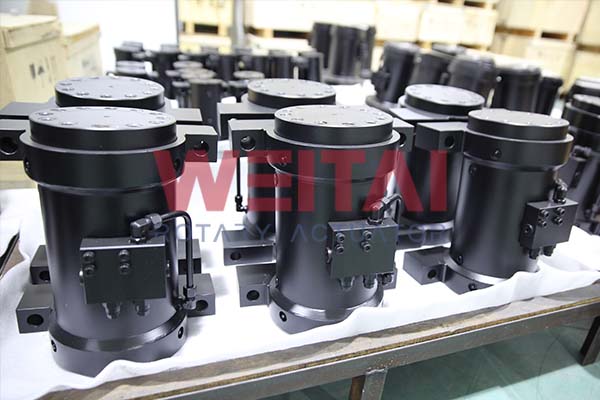360-degree rotary actuators are essential components in a wide range of applications, from robotics to industrial automation. Their ability to provide continuous rotation opens up a world of possibilities for motion control and automation. As technology evolves, so too do the designs and capabilities of these actuators. In this post, we’ll explore some of the most innovative designs in 360-degree rotary actuators and their implications for various industries.

1. Modular Designs
One of the significant trends in 360-degree rotary actuators is the shift toward modular designs:
- Customizability: Modular actuators allow users to mix and match components based on specific application needs. This flexibility can lead to tailored solutions that optimize performance and reduce costs.
- Easy Upgrades: As technology advances, modular systems enable easier upgrades. Users can replace or enhance individual modules without overhauling the entire system.
2. Smart Actuation
The integration of smart technology is transforming how 360-degree rotary actuators operate:
- Sensors and Feedback Loops: Innovative designs now incorporate sensors that provide real-time feedback on position, speed, and torque. This data enhances precision and allows for more responsive control.
- IoT Integration: Many modern actuators connect to the Internet of Things (IoT), enabling remote monitoring and control. This connectivity allows for predictive maintenance, reducing downtime and improving reliability.
3. Energy Efficiency
Energy-efficient designs are becoming increasingly important as industries strive to reduce operational costs and environmental impact:
- Low Power Consumption: New actuator designs focus on minimizing energy usage without sacrificing performance. Techniques such as regenerative braking can capture energy during deceleration, contributing to overall efficiency.
- Sustainable Materials: Some manufacturers are adopting sustainable materials and manufacturing processes, further enhancing the eco-friendliness of their products.
4. Compact and Lightweight Designs
As automation systems become more complex, the demand for compact and lightweight actuators has risen:
- Space-Saving Solutions: Innovative designs focus on reducing size and weight while maintaining high torque output. This is particularly beneficial in robotics and applications where space is limited.
- Enhanced Mobility: Lightweight actuators contribute to increased agility in robotic systems, allowing for faster and more precise movements.
5. Advanced Control Technologies
New control technologies are improving the performance and usability of 360-degree rotary actuators:
- Advanced Motion Control Algorithms: Innovative designs often feature sophisticated algorithms that enhance motion control, enabling smoother transitions and more complex movements.
- User-Friendly Interfaces: Many modern actuators come with intuitive control interfaces, making it easier for operators to configure and adjust settings without extensive training.
6. Robustness and Reliability
Durability and reliability are paramount in actuator design, especially in demanding environments:
- Enhanced Sealing and Protection: Innovative designs now incorporate advanced sealing technologies to protect against dust, moisture, and other contaminants. This ensures consistent performance even in harsh conditions.
- Longevity and Maintenance: New materials and construction techniques are improving the lifespan of 360-degree rotary actuators while minimizing maintenance needs. This reliability is crucial for industries that rely on continuous operation.
7. Application-Specific Features
Many manufacturers are designing actuators with specific applications in mind:
- Robotics: Actuators designed for robotic arms may incorporate features like higher torque output and compactness for intricate movements.
- Aerospace and Automotive: In these industries, actuators may be optimized for weight reduction and high precision, critical for performance and safety.
Conclusion
The evolution of 360-degree rotary actuators is marked by innovative designs that enhance functionality, efficiency, and reliability. From modular systems that allow for customization to smart technologies that enable real-time monitoring, these advancements are transforming how industries approach automation and motion control. As we move forward, the continued innovation in actuator design will undoubtedly open new doors for applications across various sectors, enhancing productivity and enabling the next generation of automated systems. Embracing these innovations will be key for organizations looking to stay competitive in an ever-evolving landscape.
